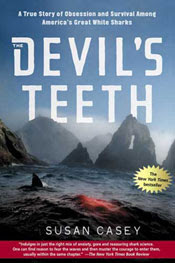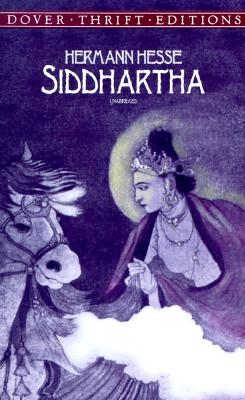Wednesday, April 23, 2008
Hallowe'en Party by Agatha Christie
Hallowe'en Party centers around the death of a child, drowned at a Halloween party. Ariadne Oliver, a famous mystery author, calls Hercule Poirot for his help. As Poirot begins to piece together the story behind the murder, he discovers more and more secrets hidden in the small town. Forgeries, disappearances and murder all appear throughout the book.
Hallowe'en Party is unique among her other works in its subject matter and the issues it tackles. I have yet to read through all of Christie's works, but I do not know if she deals with the murder of a child in any other book. Christie wrote prolifically for years, and this book was written just seven years before her death. Obviously, her writing style will change as time goes on. Her early books are purely whodunits. This is a little darker than normal.
It is most definitely worth the read, as all of Christie's books are. I hope you enjoy this book.
Saturday, January 5, 2008
Death Do Us Part, ed. by Harlan Coben
Death Do Us Part, ed. by Harlan Coben
Death Do Us Part is a collection of short stories about "love, lust and murder," quotes the book cover (which is a terrific shade of green, by the way). I didn't particularly enjoy them all (read: "Wifey" and "Blarney") but I didn't dislike them in particular, either. Several endings grabbed me ("Safe Enough", "One True Love").
But the ones I enjoyed the most were "The Last Flight" and "Part Light, Part Memory." I've never read anything before by the two authors. "The Last Flight" by Brendan DuBois shows a veteran on his last flight with his wife. Her ashes in a small jar beside him, he relives pieces of their lives and snippets of his experiences during the war. You can feel his pain -- you just want to hug him.
"Part Light, Part Memory" by Bonnie Hearn Hill takes place at the very end of the Civil War in America with the story of a young slave girl's thirst for revenge. I don't think the author intended this, but in one moment of her story she brings up the hymn, "Amazing Grace." I caught a slight parallel between the young girl and the hymn. The author of "Amazing Grace," John Newton, began his adult life as a slave trader and a bitter, cruel man. It isn't until he accepted Christ and became a Christian that he began to change his ways, and he actually became a huge proponent of the abolition of slavery. Newton wrote the hymn as a testimony of how his life had been changed. Slight parallel, as I said.
Authors and Stories
Ridley Pearson ("Queeny")
Lee Child ("Safe Enough")
Charles Ardai ("The Home Front")
Brendan DuBois ("The Last Flight")
Bonnie Hearn Hill ("Part Light, Part Memory")
Steve Hockensmith ("Blarney")
William Kent Krueger ("Heat Lightning")
Tim Maleeny ("Till Death Do Us Part")
Rick McMahan ("The Cold, Hard Truth")
P. J. Parrish ("One Shot")
Tom Savage ("Cyberdate.com")
Charles Todd ("Home Coming")
Tim Wohlforth ("The Masseuse")
Jeff Abbott ("A Few Small Repairs")
Jim Fusilli ("Chellini's Solution")
Laura Lippman ("One True Love")
R. L. Stine ("Wifey")
Jay Brandon ("Pushed or Was Fell")
Harlan Coben ("Entrapped")
Monday, November 12, 2007
Pig Tails 'n Breadfruit by Austin Clarke
 Pig Tails 'n Breadfruit
Pig Tails 'n Breadfruit Clarke portrays the culture of Barbados with descriptions of different dishes and the rituals surrounding them. Each meal originated with the tension of slavery and rebellions in the early years of Barbados. The meals are slave food, made from the leftovers of the plantation house. With each chapter, Clarke shows how a food created in the time of poverty and suppression has been changed to a traditional, native meal, full of ritual and meaning.
Many times Clarke writes of his perceptions of racism.
"...Only now do I realize why we called the rice from Demerara, and later from Trinidad, "white rice." White rice was nothing more than plain rice. Through a quirk in my understanding of race and colour, I had thought that white rice was of higher quality and must have been prepared expressly for the tables of the Plantation."
The food doesn't always sound delicious...
"When we finish, and the bones are tossed into the yard ... I wander through the neighbourhood, chewing the eyeballs of the chicken, pretending they are two gobs of Wrigley's chewing gum in my mouth."
8/10
Thursday, October 18, 2007
The Face by Daniel McNeill
The Face had lots of different tidbits that, when correctly dropped into conversation, lead to friends describing you as cultured, knowledgeable, or well-rounded. For example, did-ya know the Powhatan Indians would stretch their earlobes, then hang dead rats by the tail or live snakes from them? Try bringing that up next time your mom complains about your lip ring!
I liked reading it. It was fun, interesting, and a quick read. Enjoy it!
Monday, October 15, 2007
Metapost: Hiatus
In the meantime, I have some webcomics listed that I like. Check 'em out.
Friday, September 21, 2007
The Devil's Teeth by Susan Casey
 The Devil's Teeth by Susan Casey
The Devil's Teeth by Susan CaseyIt started with watching a documentary during a bout with mononucleosis, and turned into a drive to learn and experience great white sharks. Just off the coast of California, near San Francisco, some of the largest white sharks in the world congregate, migrating there year after year. Susan Casey managed to get a day pass to visit the biologists living on the Farallone Islands, a remote research occupied by a few scientists each year. With the sighting of her first great white, she was hooked to the point of obsession, and had to return. She examines the history of the sharks and the island, learning as much as she could while there.
While reading this book, you get a sense of the obsession that Casey felt while studying the sharks. The power, intelligence, and character of the sharks inspired her, and in turn Casey inspires you. Although the general feeling I got from the book was of the necessity to study and protect our oceans, the book was not written as a guilt trip. The emotion is genuine, coming from Casey's absolute love for the animal.
Metapost: BookQuiz

You're Siddhartha!
by Hermann Hesse
You simply don't know what to believe, but you're willing to try
anything once. Western values, Eastern values, hedonism and minimalism, you've spent
some time in every camp. But you still don't have any idea what camp you belong in.
This makes you an individualist of the highest order, but also really lonely. It's
time to chill out under a tree. And realize that at least you believe in
ferries.
Take the Book Quiz
at the Blue Pyramid.